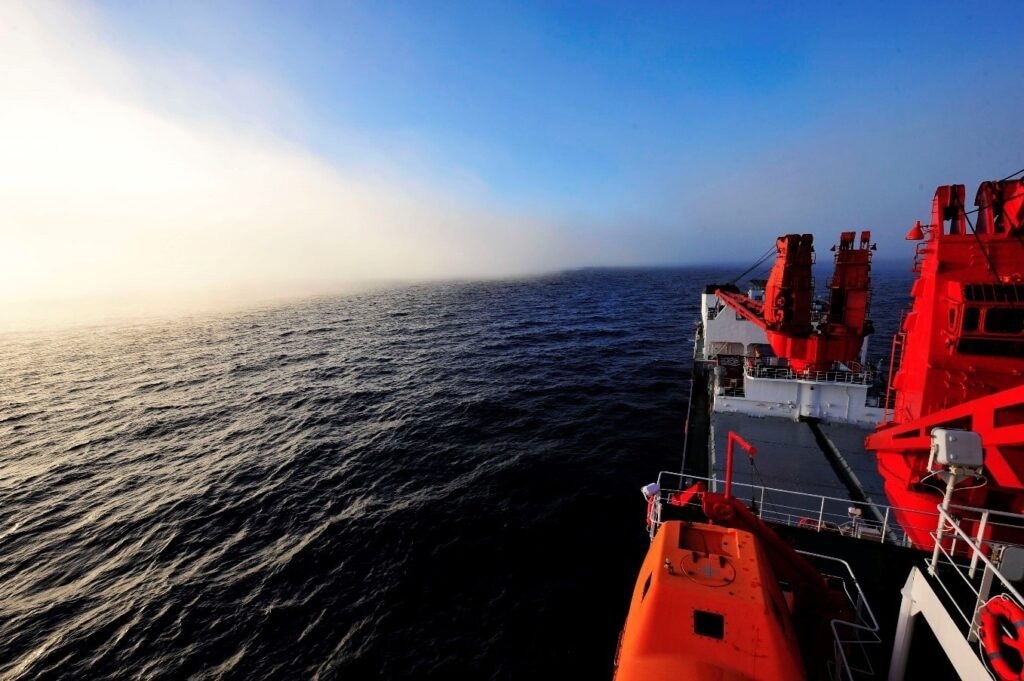Trans-Arctic shipping has expanded as the Arctic warms and sea ice melts, lowering travel time and expenses for international trade. According to a recent study, the Arctic Ocean is becoming foggier as ice thaws, decreasing visibility and prompting costly delays as ships pause to avoid dangerous sea ice.
 A warmer Arctic is a foggier Arctic, which can slow shipping times for the Northwest Passage and Northern Sea Route, says a new study in the AGU journal Geophysical Research Letters. Image Credit: Xianyao Chen.
A warmer Arctic is a foggier Arctic, which can slow shipping times for the Northwest Passage and Northern Sea Route, says a new study in the AGU journal Geophysical Research Letters. Image Credit: Xianyao Chen.
The research was published in Geophysical Research Letters, a journal that publishes high-impact, short-format findings having direct significance in the Earth and space sciences.
For decades, Arctic Sea ice has been receding. Because of this loss, shipping channels in the Northwest Passage and the Northern Sea Route have opened, allowing non-icebreaker ships to avoid the time-consuming Panama and Suez Canals further south.
However, as the ice melts, cold air is exposed to warmer water, and the warm vapor condenses into the fog in the newly formed passages. Hidden ice chunks already pose a concern to vessels traveling through foggy, low-visibility areas.
The future of shipping in the Arctic is unclear, but fog could pose a significant challenge. When designing shipping routes across the Arctic, we need to consider the impact of fog.
Xianyao Chen, Study Author and Physical Oceanographer, Ocean University of China
Researchers used data on Arctic fog gathered from 1979 to 2018 and climate projections from the Fifth Phase of the Coupled Model Intercomparison Project to investigate how climate change has influenced fog conditions along Arctic shipping routes, as well as to predict how conditions will change in the 21st century. The researchers also devised alternative routes to reduce foggy days in transit.
Researchers discovered that ships traveling through the Northwest Passage are more likely to experience fog than ships traveling through the Northern Sea Route. Fog is more common and persistent in the Northwest Passage, which skips the Panama Canal, and can lengthen sailing time by up to three days.
The Northern Sea Route, which avoids the Suez Canal, is expected to take no more than one day longer to sail. Both planned routes, according to the study, would encounter less fog if they were moved further away from the sea ice edge.
Fog is already cutting into the time saved by traveling the far shorter Arctic routes; shipping speeds are slower on foggy days than on clear days, according to Chen. Shipping may continue to stall as the Arctic becomes foggier unless routes are altered. A multi-day delay due to fog significantly increases the costs of a trans-Arctic trip, with daily operating costs for large container ships often ranging from $50,000 to $150,000.
Avoiding ice is critical. This study did a good job at identifying the risks of fog—an important environmental constraint in the Arctic, and one that has largely been ignored.
Scott Stephenson, Physical Scientist, RAND Corporation
Scott Stephenson was not affiliated with this study.
Journal Reference:
Song, S., et al. (2023). Adapting to a Foggy Future Along Trans‐Arctic Shipping Routes. Geophysical Research Letters. doi.org/10.1029/2022gl102395.